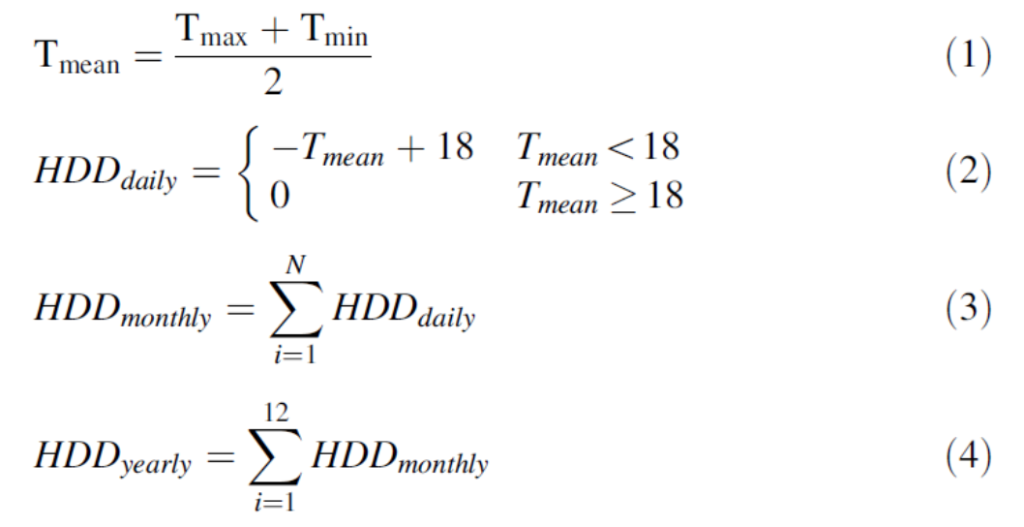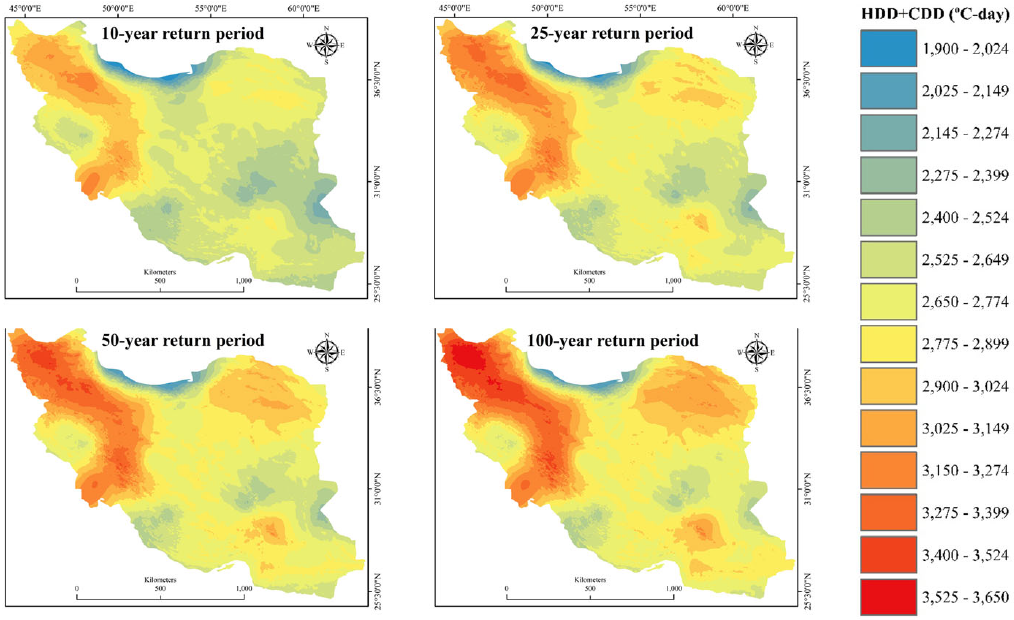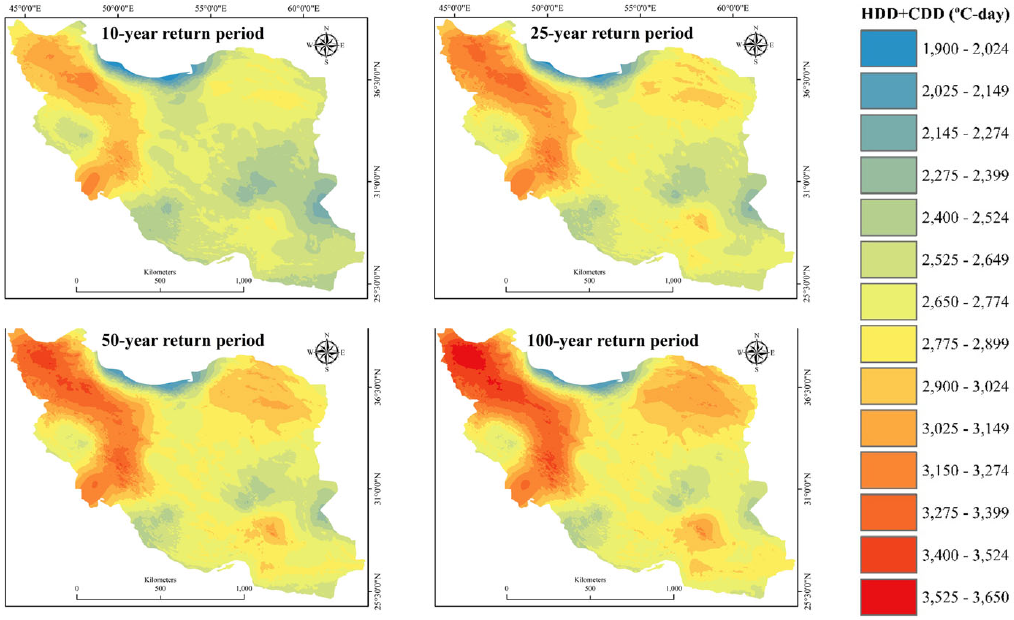Fighting climate change is hard enough in Finnish conditions but fighting climate change in a country like Iran with limited academic resources and in an unstable political climate is something different. That is the case of Amin Sadeqi, an Iranian geographer and climate researcher, who has been succeeding in the field of climate change impacts research in Iran during the last few years despite the difficulties with innovative methods. In Sadeqis opinion Iran is a good example of a country where climate change isn’t spatially or temporally constant. Learning spatial and temporal patterns of climate change impacts on temperatures is crucial for projecting, for example, the future needs of urban planning.
Sadeqi et al. (2022) conducted a research that aimed to indicate climate change impacts on cooling and heating demands of buildings in Iran. The research did not receive any grant from a funding institution either in governmental, commercial or non-profit sectors. At any rate the importance of research of this kind is difficult to underestimate considering that Iran, with it’s rapidly grown and fastly urbanized population of 82 million being the second oil and gas supplier and exporter in the world (before the USA sanction against Iran in 2019), has an energy consumption 4.4 times over the global average, which also makes it one of the top ten greenhouse gas emitting countries.
The energy inefficiencies in the country’s old infrastructure and especially in the residential sector are the major contributors to the high levels of Iran’s greenhouse gas emissions. Rapid urbanization has increased the country’s direct energy consumption as urban areas usually need more electricity for example for cooling due to the urban heat island phenomenon. Also the heavy reliance of Iran’s energy sector on fossil energy sources prevents, or at least slows remarkably, the country’s potential for shifting to sustainable energy production, which Iran has great opportunities for example in solar energy.
These two datasets were created for climate research in Iran which basically doesn’t provide much open government data (OGD). One of the rare OGD available is provided by Iran Meteorological Organization (IRIMO) from which these datasets were extracted. The two datasets represent monthly heating (HDD) and cooling (CDD) degree-days during the years of 1951-2020 in Iran calculated from the recorded data of IRIMO’s weather stations. The the two main aspects of the degree-day method are changes in HDD and CDD as they affect energy management for building and can pose a substantial threat to livelihood patterns (Sadeqi et al. 2022).
The heating (or cooling) degree day is calculated by adding up the differences of the daily indoor and outside temperatures of the whole month resulting in the heating (or cooling) degree day of a month as being the sum of the daily heating (or cooling) degree days of the month and the heating (or cooling) degree day of a year is the sum of the monthly heating (or cooling) degree days of the year (Heating degree days 2022). HDD and CDD can be studied using different indoor temperature thresholds. The indoor temperature thresholds – defined as the comfortable temperature for humans – was determined 18 °C for heating and 21 °C for cooling in the research of Sadeqi et al., as recommended by IRIMO. These are the temperature thresholds also found in the two datasets.

In the research conducted by Sadeqi et al. (2022) temporal trends and change points in HDD, CDD, and their simultaneous combination (HDD+CDD) were analyzed for a 60-year period (1960–2019) in Iran. Abrupt changes in temperature data with warming or cooling effects and related trends (before and after the abrupt change) were also analyzed with non-parametric statistical methods. With these methods and the resulting data combined to the DEM of Iran it was possible to create spatial distributions for 10-, 25-, 50- and 100-year return periods of a HDD, CDD, and HDD+CDD.
The results of this research showed the abrupt changes in HDD time series mostly occurred in the early 1980s, but those in CDD time series were mostly observed in the 1990s. This means that anthropogenic influences (e.g. climate change, urbanization) are major contributors to the increase of HDD+CDD in which CDD was the dominant factor.


“Iran has a lot of potential for solar energy use” – Amin Sadeqi
As noted above, the current political climate and regime of Iran is challenging when it comes to fighting and tackling climate change. Although Iran has promised to reduce its greenhouse gas emissions by at least 4% by 2030 as a part of the Paris Climate Agreement, very little practical actions have been taken to reach this goal (Sadeqi et al. 2022).
As an energy solution and a way of fighting global warming in Iran, Sadeqi highlights the potential of solar energy. However, he then quickly adds that under the current regime, it is not seen as feasible. It is anyhow optimistically stated by Sadeqi et al. that changing the approach of policy-makers and harnessing renewable energies could be the key factors for greenhouse gas emissions in Iran to reduce.
Sadeqi also considers children as the hope for a better future. Teaching children about climate change and its consequences which will have a huge impact on our planet and ecosystems in the future is important, but at the same time it is also possible to raise the awareness that we can do something about the situation.
“We are all climate change fighters” – Amin Sadeqi
Datasets like this, simply and innovatively derived from available temperature variables, are vitally important for climatic research which tries to predict the impacts which the climate change puts upon for example residential sector infrastructure or to other built environments that would require additional heating or cooling.
When asked Amin Sadeqi if he is trying to make an impact for climate awareness also in Iran with his research, the answer was clear: “Well yes. We are all climate change fighters.”.
References
Heating degree days (2022) Finnish Meteorological Institute, Helsinki. 6.10.2022.
https://en.ilmatieteenlaitos.fi/heating-degree-days
Sadeqi A, Tabar H, Dinpashoh Y (2022). Spatio-temporal analysis of heating and cooling degree-days
over Iran. Stochastic Environmental Research and Risk Assessment 36:869–891.

